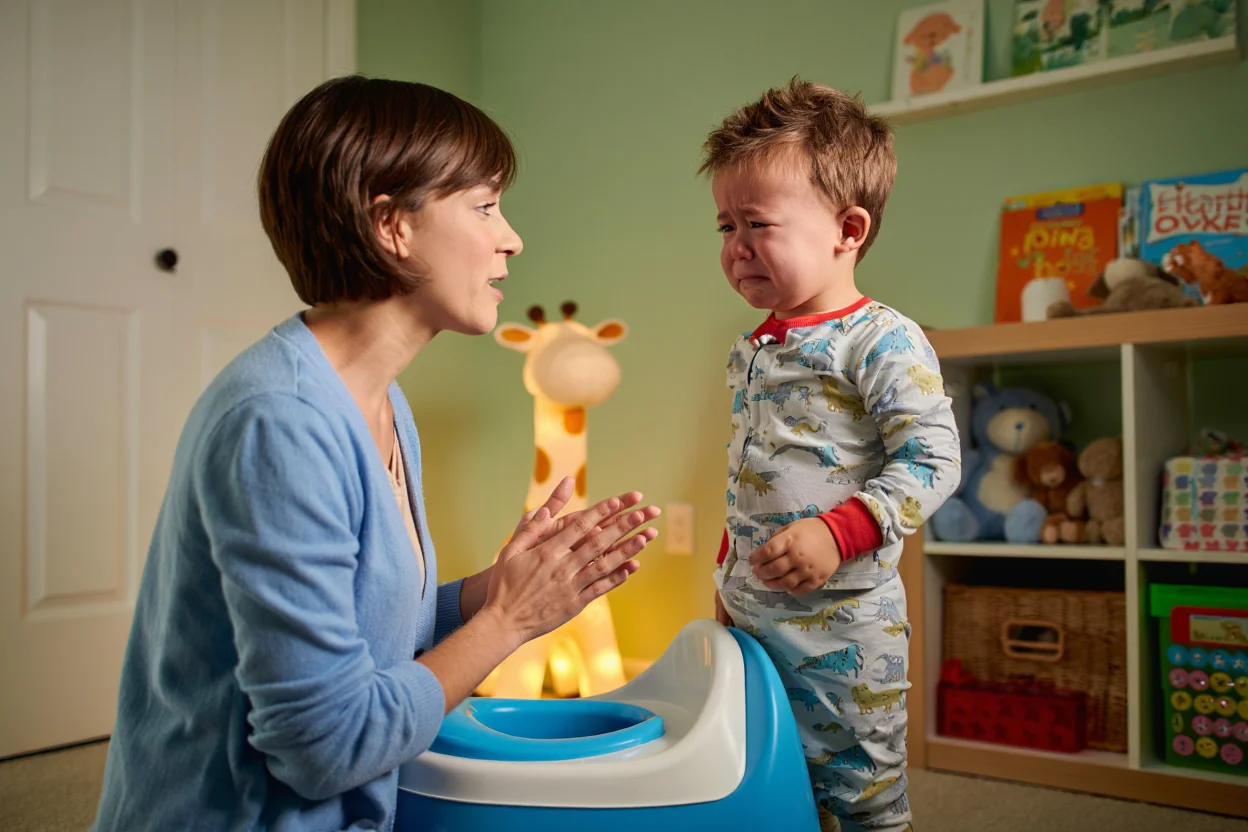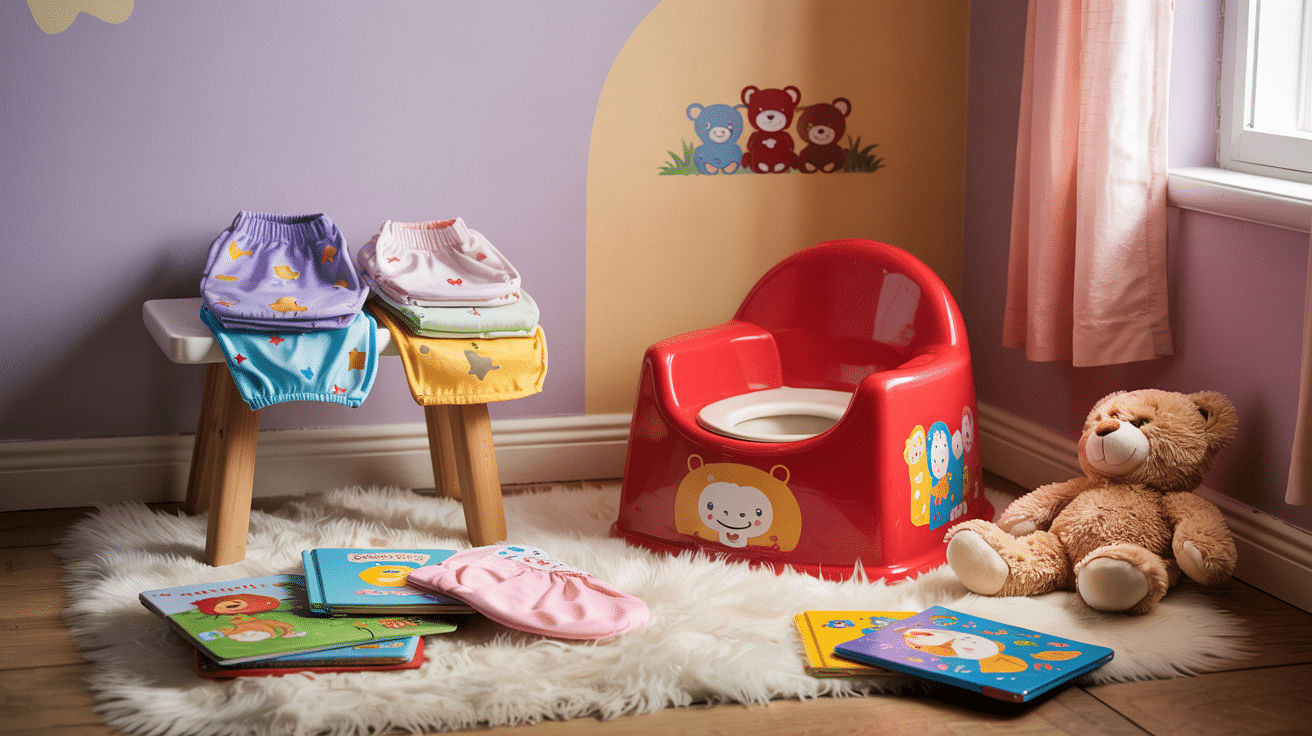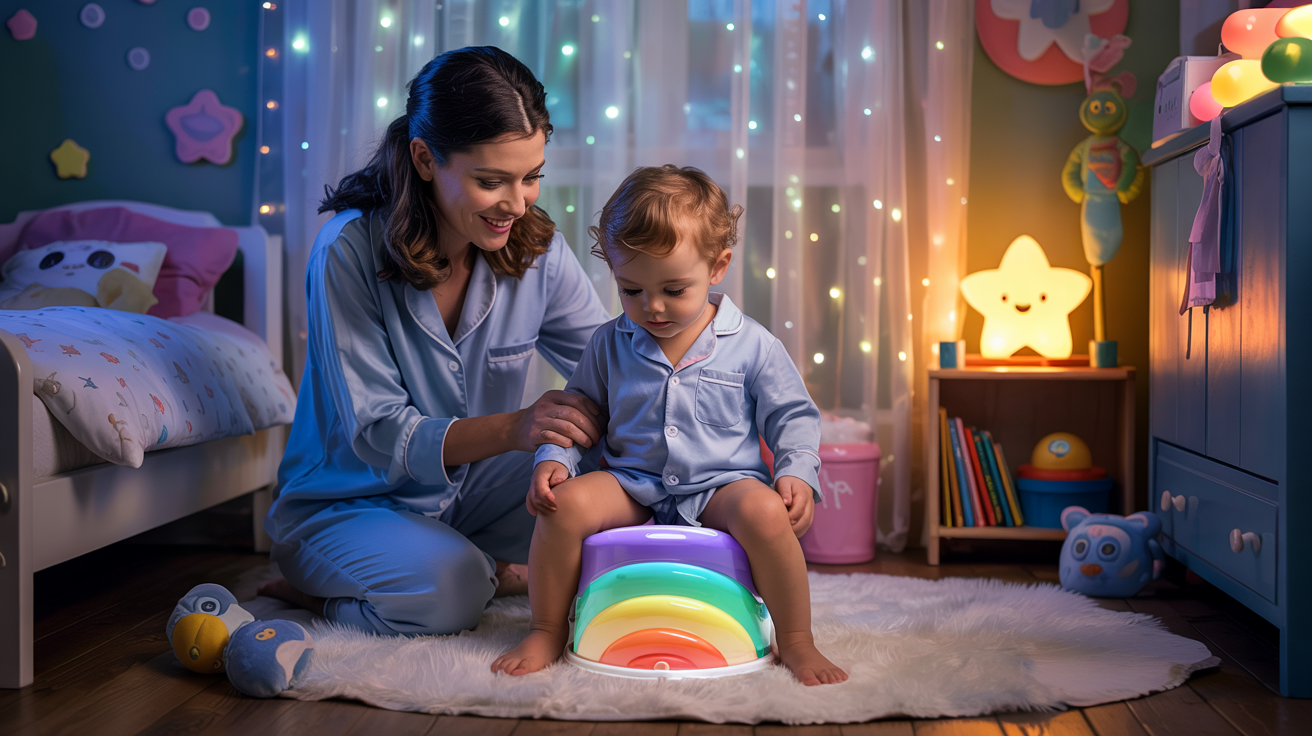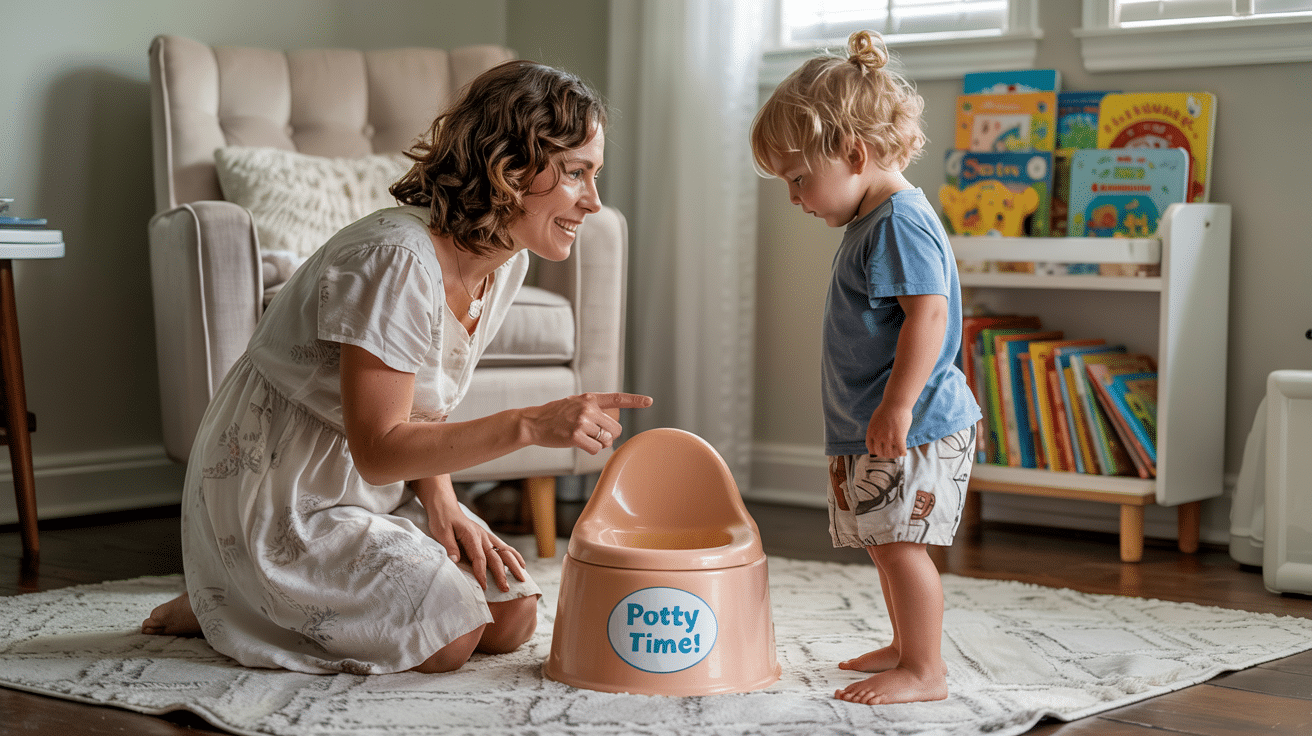Need to get your child out of diapers? Most parents feel lost when helping their little ones move from diapers to the potty. The crying, the accidents, the stains on your favorite rug, it’s enough to make anyone want to stick with diapers forever.
What if your child isn’t ready? What if you’re doing it all wrong? Don’t worry. With the right approach, toilet training can be simpler than you think.
This potty training blog shows you how to spot readiness signs, which methods work best, and what tools you’ll need. Ready to say goodbye to diapers? Let’s get started.
When to Start Potty Training: Timing Is Everything

The ideal time to begin potty training is typically between 18 months and 3 years old. Parents should watch for key signs that a child is ready.
These include staying dry for at least two hours, showing curiosity about the bathroom, following basic directions, and feeling uncomfortable in soiled diapers.
Remember that each child develops at their own pace. Some kids might be ready earlier, while others need more time. Forcing the training before a child shows these readiness signs often leads to frustration and setbacks.
Instead of comparing your child to others, focus on their individual progress. The goal is to make this learning process positive. When you notice multiple readiness signs appearing together, that’s usually the best time to start.
Essential Tools & Supplies for Smooth Potty Training

Having the right equipment makes potty training less stressful for you and your child. The tools below help create a kid-friendly bathroom setup that builds confidence and makes the process more fun.
- Potty chairs – Small, child-sized potties that sit on the floor or toilet seat reducers that fit on regular toilets make kids feel safe and comfortable.
- Training pants – These act as a middle step between diapers and underwear, allowing children to feel wetness while limiting messes.
- Potty charts – Visual tracking with stickers helps children see their progress and builds motivation.
- Step stools – These help little ones reach the toilet and sink independently, building confidence.
- Rewards – Simple prizes like stickers or small treats can boost a child’s desire to use the potty.
- Simple clothing – Pants with elastic waists and easy-to-remove items help prevent accidents when kids need to go quickly.
Effective Potty Training Methods for Every Child
Finding the right training method can make a big difference in your success. The best approach fits your child’s personality and learning style.
This potty training blog outlines proven methods that parents often find helpful when teaching their little ones to use the potty.
3-Day Potty Training Method
This method involves three days at home with no diapers.
During this time, parents offer frequent trips to the potty and watch for signs their child needs to go. Children wear loose clothing or nothing below the waist to help them connect the feeling of needing to go with using the potty.
This works well for children showing strong readiness and parents who can dedicate a full weekend to training.
Child-Led Potty Training
This gentle approach follows your child’s natural interest in the potty.
Parents introduce a potty chair, read books about using the toilet, and answer questions. There’s no push or strict timeline – children move from diapers to underwear at their own pace.
It takes longer but often creates less stress for both parents and children.
Scheduled Potty Training
With this method, parents take their child to the bathroom at set times throughout the day – typically every 30 minutes to 2 hours.
Eventually, children learn to recognize the feeling of needing to go before the scheduled time. This method helps create routine and works well for families with regular daily schedules.
Reward-Based Training
This approach uses small rewards to make potty training fun. Each success earns a sticker on a chart, a small toy, or extra praise.
Many parents combine this with other methods for extra motivation. The key is keeping rewards simple and immediate so children connect using the potty with positive feelings.
Practical Potty Training Tips for Day and Night Success

Mastering potty training involves different steps for daytime success and nighttime dryness. Most experts suggest focusing on daytime training first, as nighttime control often takes longer to develop.
- Start with daytime training and only move to nighttime when your child stays dry during the day.
- Cut back on drinks 1-2 hours before bedtime to reduce the chance of accidents.
- Protect mattresses with waterproof covers for easier cleanup after accidents.
- Consider using special training pants at night that feel different from regular diapers.
- Take your child to the bathroom right before bed and again when you go to sleep.
- Be patient – nighttime dryness can take months or even years after daytime success.
- Keep a small night light in the bathroom so children can find it easily.
Staying Positive Through Potty Training Challenges
Potty training comes with ups and downs for every family. When accidents happen, remain calm and reassure your child that it’s okay – cleaning up without fuss shows them that mistakes are part of learning.
If your child resists training, it’s often best to pause for a few weeks rather than create tension. Many children experience regression during big life changes, like a new sibling or starting preschool. This is normal and usually passes with patience.
Some kids develop fears about the toilet; in that case, using fun books or simple demos can help them feel more comfortable. When you’re away from home, bring a portable potty seat to maintain consistency.
Throughout the process, focus on praising attempts and successes rather than pointing out failures. Your supportive attitude helps build your child’s confidence during this important skill-building time.
Final Thoughts
Potty training marks an important step in your child’s growth. Remember, this process isn’t a race. Your child will get there when they’re ready, following their own timeline.
The methods we’ve shared in this potty training blog offer various paths to success, allowing you to choose what fits your family best.
Stay consistent, keep your sense of humor, and celebrate small wins along the way. With patience and the right approach, your little one will master this skill, building confidence that extends beyond the bathroom.
Have you gone through potty training with your child? What worked best for your kid? Share your experiences in the comments below to help other parents with this experience.




